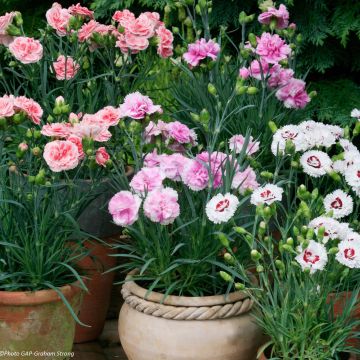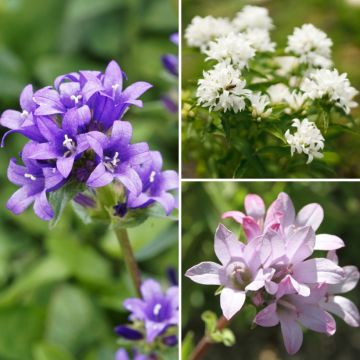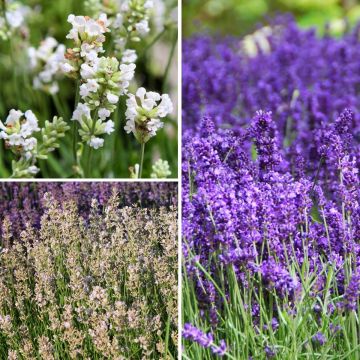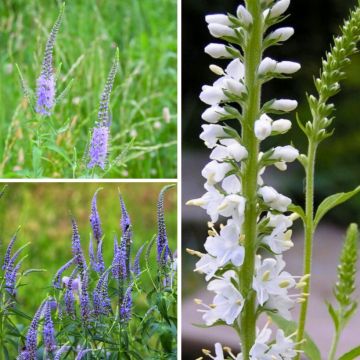

Value Pyrethrum Duo


Value Pyrethrum Duo
Value Pyrethrum Duo
Tanacetum coccineum Robinson's Rose (Pink), Robinson's Red
Special offer!
Receive a €20 voucher for any order over €90 (excluding delivery costs, credit notes, and plastic-free options)!
1- Add your favorite plants to your cart.
2- Once you have reached €90, confirm your order (you can even choose the delivery date!).
3- As soon as your order is shipped, you will receive an email containing your voucher code, valid for 3 months (90 days).
Your voucher is unique and can only be used once, for any order with a minimum value of €20, excluding delivery costs.
Can be combined with other current offers, non-divisible and non-refundable.
Home or relay delivery (depending on size and destination)
Schedule delivery date,
and select date in basket
This plant carries a 12 months recovery warranty
More information
We guarantee the quality of our plants for a full growing cycle, and will replace at our expense any plant that fails to recover under normal climatic and planting conditions.
Would this plant suit my garden?
Set up your Plantfit profile →
Collection items (2 plants)
Description
This affordable duo of Pyrethrum will delight gardeners looking for easy perennial plants that bring a beautiful touch of colour to flower beds for several weeks. It combines two varieties of Tanacetum coccineum, 'Robinson's Rose' and 'Robinson's Red'. These two plants, with their rustic appearance, are attractive for their long spring to summer flowering and finely cut aromatic foliage. Formerly classified as chrysanthemums, they are ideal for gardeners who have little time to devote to maintaining their flower beds. Their above-ground vegetation is deciduous and their stump can withstand temperatures as low as -29 °C (-20.2°F).
The duo consists of:
1 x Tanacetum coccineum 'Robinson's Rose': this variety produces flowers in shades of pink at the top of strong stems, reaching a height of 60 to 75 cm (24 to 30in). The foliage is dark green and finely cut, adding an interesting texture to the garden.
1 x Tanacetum coccineum 'Robinson's Red': brighter, this variety offers intensely red flowers. Its height is similar to that of 'Robinson's Rose', with stems that can reach up to 90 cm (35in). The foliage is also dark green and finely cut, absent in winter.
These two varieties of pyrethrum thrive particularly well in a well-drained, rather moist soil in a sunny to semi-shaded area of the garden. For planting in a flower bed, place 'Robinson's Rose', slightly smaller, in the foreground and 'Robinson's Red' in the background. Allow for three to four plants per square metre and maintain a distance of at least 45 cm (18in) between each plant.
To create a cohesive ensemble, combine the varieties of Tanacetum coccineum Robinson's with plants that have similar needs. The Penstemon 'Husker Red', with its purple foliage and white flowers, offers an interesting contrast. Phlox paniculata 'David' with its white flowers will enhance the colors of the Tanacetum without overshadowing them. Add Bergenia 'Winterglut' with its reddish leaves in winter and pink flowers in spring, this perennial will keep the scene attractive all year round.
Report an error about the product description
Value Pyrethrum Duo in pictures


Flowering
Foliage
Plant habit
Botanical data
Tanacetum
coccineum
Robinson's Rose (Pink), Robinson's Red
Asteraceae
Chrysanthemun roseum
Cultivar or hybrid
Other Perennial collections
View all →Planting and care
Pyrethrum should be planted in spring or autumn, in a sunny exposition, in any soil properly drained, not too poor and not too dry. It doesn't appreciate clay, compact and wet soils, suffocating for its roots. If your soil is heavy, incorporate coarse sand or gravel and light soil to improve drainage. In healthy soil, this plant is hardy enough for our climates. It has no enemies or diseases, against which it is naturally immune. This plant tolerates and even prefers limestone and sandy soils. It shows fairly good resistance to drought in deep soil.
Planting period
Intended location
Care
Planting & care advice
This item has not been reviewed yet - be the first to leave a review about it.
Haven't found what you were looking for?
Hardiness is the lowest winter temperature a plant can endure without suffering serious damage or even dying. However, hardiness is affected by location (a sheltered area, such as a patio), protection (winter cover) and soil type (hardiness is improved by well-drained soil).

Photo Sharing Terms & Conditions
In order to encourage gardeners to interact and share their experiences, Promesse de fleurs offers various media enabling content to be uploaded onto its Site - in particular via the ‘Photo sharing’ module.
The User agrees to refrain from:
- Posting any content that is illegal, prejudicial, insulting, racist, inciteful to hatred, revisionist, contrary to public decency, that infringes on privacy or on the privacy rights of third parties, in particular the publicity rights of persons and goods, intellectual property rights, or the right to privacy.
- Submitting content on behalf of a third party;
- Impersonate the identity of a third party and/or publish any personal information about a third party;
In general, the User undertakes to refrain from any unethical behaviour.
All Content (in particular text, comments, files, images, photos, videos, creative works, etc.), which may be subject to property or intellectual property rights, image or other private rights, shall remain the property of the User, subject to the limited rights granted by the terms of the licence granted by Promesse de fleurs as stated below. Users are at liberty to publish or not to publish such Content on the Site, notably via the ‘Photo Sharing’ facility, and accept that this Content shall be made public and freely accessible, notably on the Internet.
Users further acknowledge, undertake to have ,and guarantee that they hold all necessary rights and permissions to publish such material on the Site, in particular with regard to the legislation in force pertaining to any privacy, property, intellectual property, image, or contractual rights, or rights of any other nature. By publishing such Content on the Site, Users acknowledge accepting full liability as publishers of the Content within the meaning of the law, and grant Promesse de fleurs, free of charge, an inclusive, worldwide licence for the said Content for the entire duration of its publication, including all reproduction, representation, up/downloading, displaying, performing, transmission, and storage rights.
Users also grant permission for their name to be linked to the Content and accept that this link may not always be made available.
By engaging in posting material, Users consent to their Content becoming automatically accessible on the Internet, in particular on other sites and/or blogs and/or web pages of the Promesse de fleurs site, including in particular social pages and the Promesse de fleurs catalogue.
Users may secure the removal of entrusted content free of charge by issuing a simple request via our contact form.
The flowering period indicated on our website applies to countries and regions located in USDA zone 8 (France, the United Kingdom, Ireland, the Netherlands, etc.)
It will vary according to where you live:
- In zones 9 to 10 (Italy, Spain, Greece, etc.), flowering will occur about 2 to 4 weeks earlier.
- In zones 6 to 7 (Germany, Poland, Slovenia, and lower mountainous regions), flowering will be delayed by 2 to 3 weeks.
- In zone 5 (Central Europe, Scandinavia), blooming will be delayed by 3 to 5 weeks.
In temperate climates, pruning of spring-flowering shrubs (forsythia, spireas, etc.) should be done just after flowering.
Pruning of summer-flowering shrubs (Indian Lilac, Perovskia, etc.) can be done in winter or spring.
In cold regions as well as with frost-sensitive plants, avoid pruning too early when severe frosts may still occur.
The planting period indicated on our website applies to countries and regions located in USDA zone 8 (France, United Kingdom, Ireland, Netherlands).
It will vary according to where you live:
- In Mediterranean zones (Marseille, Madrid, Milan, etc.), autumn and winter are the best planting periods.
- In continental zones (Strasbourg, Munich, Vienna, etc.), delay planting by 2 to 3 weeks in spring and bring it forward by 2 to 4 weeks in autumn.
- In mountainous regions (the Alps, Pyrenees, Carpathians, etc.), it is best to plant in late spring (May-June) or late summer (August-September).
The harvesting period indicated on our website applies to countries and regions in USDA zone 8 (France, England, Ireland, the Netherlands).
In colder areas (Scandinavia, Poland, Austria...) fruit and vegetable harvests are likely to be delayed by 3-4 weeks.
In warmer areas (Italy, Spain, Greece, etc.), harvesting will probably take place earlier, depending on weather conditions.
The sowing periods indicated on our website apply to countries and regions within USDA Zone 8 (France, UK, Ireland, Netherlands).
In colder areas (Scandinavia, Poland, Austria...), delay any outdoor sowing by 3-4 weeks, or sow under glass.
In warmer climes (Italy, Spain, Greece, etc.), bring outdoor sowing forward by a few weeks.





















































